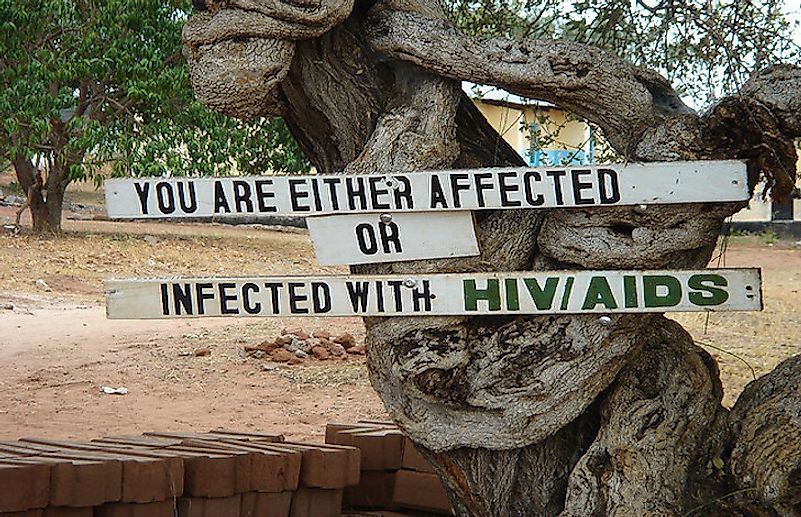Leading Causes Of Death In Zambia

Zambia is one of the landlocked countries in the southern part of Africa bordered by DRC, Malawi, Tanzania, Mozambique, and Namibia. The country has a population of 16.2 million people with the majority of its population (44%) living in towns like Lusaka, Kitwe, Chipata, and Ndola. The Ministry of Health has the responsibility of handling health -related activities and infrastructure in the country. Zambia’s expenditure on health accounts for 5% of GDP. The life expectancy in the country is 59 and 65 years for male and female respectively. The probability of one dying between the age of 15 and 60 per 1000 people is 356 and 303 among the male and female respectively. The under-5 mortality rate in the country is 145 deaths per 1000 live births. Some of the leading causes of death in Zambia include;
HIV/AIDS
AIDS is the number one killer, accounting for 20% of deaths in Zambia. Over 1.2 million people are infected with the HIV. HIV/AIDS prevalence among the adults is 12.9% and claims about 20,000. The country records 60,000 new infections every year. HIV/AIDS is prevalent in the urban areas. The key affected population includes sex workers, men who have sex with other men, migrants, children who are born to infected mothers. The disease is driven by multiple and concurrent sex partners, inconsistent condom use, mobility and labor migration, and transmission from mother to child.
Malaria
Though Zambia has made great strides in prevention and control of malaria, the disease remains one of the leading causes of death in the country. 12% of the deaths reported in Zambia were as a result of malaria. More than 50% of all malaria-related deaths are reported among the children under the age of 5 years and pregnant women especially those in rural areas. Malaria prevention and treatment in Zambia is very expensive for most of the Zambian poor population. The poor awareness on the disease and the poor health seeking habits also contributes to the high number of deaths.
Lower Respiratory Infections
Lower Respiratory infections such as tuberculosis is a major health problem in Zambia accounting for 7% of deaths in the country despite the efforts of the Ministry of Health. The high rate of transmission of Lower Respiratory infections makes it difficult to contain the disease. Overcrowding in public places and health facilities has led to the spread of these infections.
Protein-Energy Malnutrition
Protein-energy malnutrition is a major cause of death among children under 5 years old. The condition accounts for 5% of all reported death with 99% being children. The majority of children in the remote area are at risk of dying from malnutrition because of lack of access to adequate and protein rich meals. Most of the parents in the remote areas of Zambia are unable to afford quality food for their children.
Public Health Facilities and Schemes
While Zambia offers universal healthcare to its citizens, the public health facilities in Zambia remains under-funded. People living in rural areas have to a walk long distances to access health facilities. The few health personnel are overwhelmed by the high number of patients visiting the health facilities. There are several private health facilities especially in Lusaka and other urban areas. However, the high cost of medication in these medical facilities has discouraged low-income earners from seeking services. Not everyone has health insurance cover in the country.
Leading Causes Of Death In Zambia
| Rank | Cause Of Death | % Of Total Deaths |
|---|---|---|
| 1 | HIV/AIDS | 20% |
| 2 | Malaria | 12% |
| 3 | Lower Respiratory Infections | 7% |
| 4 | Protein-Energy Malnutrition | 5% |
| 5 | Stroke | 4% |
| 6 | Diarrheal Diseases | 4% |
| 7 | Meningitis | 4% |
| 8 | Ischemic Heart Disease | 3% |
| 9 | Syphilis | 2% |
| 10 | Road Injuries | 2% |











